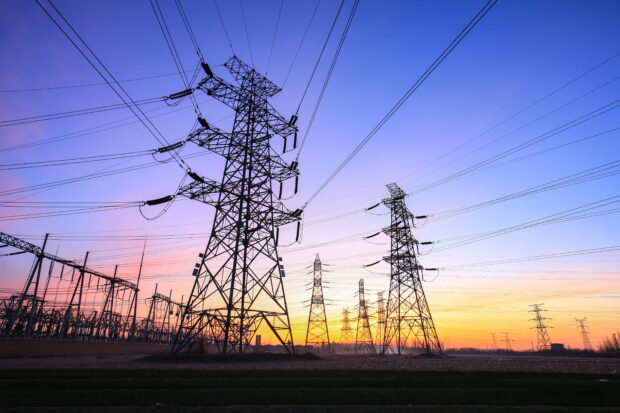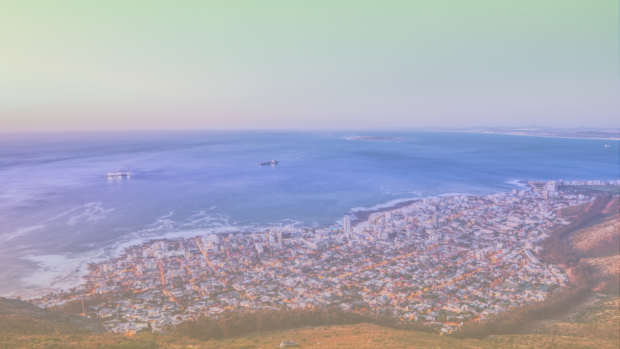Countries are at a crucial juncture in their green transition journeys. At the heart of this transition lies the role of decentralised energy and distributed energy resources (DERs), which are increasingly seen as a cornerstone for the green future. DERs are not just a source of electricity – they also promise cleaner sources of energy, lower costs, and fewer blackouts, making them the next leap for individuals who lack digital connectivity, energy access, and green growth.
So, what are DERs, and why are they helpful?
With over 750 million people still lacking energy access globally and almost 1.6 billion people experiencing unreliable access to electricity, there is a need to empower local communities and individuals suffering from energy poverty and existing electric grid vulnerabilities. Distributed energy resources (DERs) offer a decentralised mode of electricity generation and storage, which can equip individuals and communities with the ability to generate, store, and trade their own clean energy. Through this decentralised approach to electricity production, DERs reduce the over-reliance on central electricity generation, transmission, and distribution systems. Hence, DERs remain essential in the quest for eliminating energy poverty, as well as the transition towards the green economy.
DERs can encompass different types of clean energy sources, from rooftop solar and community wind systems to scaled-down versions of energy technologies, such as localised battery energy storage systems and microgrids. They are typically located near the communities who use them and operate independently, while still being able to connect to the overall grid when needed. This approach offers several benefits, as DERs can bypass existing grid inefficiencies while ensuring improved clean energy access to off-grid communities. They can also help to address some critical points of failure that currently plague the energy sector, such as transmission and distribution losses and renewable energy grid integration.
Imagine every home and village community having its own mini-power plant: rooftop panels that turn sunshine into electricity, a small wind turbine for the village, and small-sized batteries at each home that can help save extra power. These local energy sources can function on their own as a microgrid and can act as stopgap measures for power outages and unreliable electricity supply. And, due to their decentralised nature, DERs generate and consume energy where it’s needed. This helps off-grid areas access energy more quickly and ensures a steady supply – even when central power stations fail.
With DERs providing a potential bottom-up solution to accelerate the clean energy transition, their use can – and should – be expanded beyond mature economies that already have established energy infrastructure. Yet, to successfully reach low-income regions and off-grid communities, DER implementation and scaling must be simplified. Digital technology can play a key role here, as digital players have already built the rails that help enable information and data exchange. These solutions can ensure a steady power supply, payment platforms, and connectivity networks.
The DER-digital synergy can advance critical progress for those who need it most.
Digital and distributed energy resources (DERs) can pave the way for a more efficient, resilient, and sustainable energy future together. While policy and regulatory frameworks are still evolving to support digital and DER innovations, an integrated approach can develop new, state-of-the-art renewable energy systems that cater to those who are energy-starved, off-grid, and unconnected digitally. Here’s how.
1. Digital twins can turn simulations and monitoring into real-time decisions.
Innovations such as twin technology models have the potential to support planning and decision-making processes by enabling the simulation of different scenarios. This, coupled with technologies such as Internet of Things (IoT) sensors, which are integrated into smart grids, enables decision-makers to forecast and monitor the performance of DERs. Through real-time monitoring, predictive maintenance, and enhanced energy management, these innovations are accelerating the scaling up of DER implementation.
2. AI can make distributed grids work more efficiently.
DERs, as a new addition to the existing energy infrastructure, require additional tools for managing supply and demand in distributed grids and off-grid scenarios. Tools like AI-powered data analytics are helping DER operators optimise system performance and better track energy generation and consumption patterns. Digital platforms, through the concept of Virtual Power Plants (VPPs), can also aggregate different DERs into a single controllable unit. VPPs, which are enabled by AI optimisations, treat aggregated DERs as a single “virtual” energy generator, turning scattered distributed grids into a utility-style management system.
3. Existing digital rails can enable energy trading and payment flows.
The implementation and scaling of DERs can be widely enhanced by improving transparency in energy-related payments and transactions. Digital payment systems and the use of blockchain for peer-to-peer energy trading are simplifying energy financing models, lowering the barrier to DER adoption. Digital financing also builds interoperability and facilitates secure transactions, allowing DER implementors to monetise on energy generation and storage. This is key to improving overall energy efficiency and managing the supply-demand mismatches across DERs and microgrids through financial incentives for providers and consumers. Together, these tools, if used effectively, can help unlock new business models that promote individual and community-owned DERs to produce and trade electricity through transparent financing streams.
A pilot research effort by the US Department of Energy demonstrates the power of innovative approaches to energy management.
The United States Department of Energy’s National Renewable Energy Laboratory (NREL) has created a suite of digital innovations called Distributed Energy Resource Management Systems (DERMS) to help off-grid communities and individuals harness the potential of distributed energy resources (DERs). DERMS is an energy management digital platform focused on microgrid management frameworks with federated architectures to drive the frictionless adoption of DERs.
DERMS has introduced a digital tool, EdgeFlex, which ensures each DER’s ability to regulate the supply of power and electricity based on demand. This also allows utilities to manage these resources as a single entity (VPP) and use them as an external power source for the grid. EdgeFlex has created new revenue streams for DER owners and communities, while also giving utilities the ability to manage demand peaks and avoid blackouts without additional risks.
Finally, DERMS also provide for a federated architecture through the FAST-DERMS digital platform, which utilises AI-enabled algorithms for sustaining the operation of DERs (both off-grid and those connected to the grid) during grid outages. Under this system, the control and management of DERs are distributed among various entities, such as individual homeowners, businesses, and community microgrids – rather than being solely controlled by the utility provider. This distributed control can improve the operations and maintenance of new and existing energy infrastructure, helping ensure the long-term reliability and stability of the grid under the DER architecture.
Decentralised energy is the future, and digital – when strategically implemented – holds the key to its acceleration.
The journey of clean energy transition can be made sustainable through a bottom-up, decentralised energy generation and distribution approach. However, innovations such as distributed energy resources (DERs) also face barriers to implementation, adoption, and scaling. While digital technology can help bypass many of these hurdles, there are also obstacles to overcome, including new points of failure, equity issues, and governance considerations. Places with poor digital connectivity can result in microgrid failures, if they are very dependent on digital tools. Due to the localised nature of energy generation and usage in DERs, personal data protection risks can be a potential constraint for scaling up adoption. These gaps need to be addressed, as they risk eroding public trust in both digital tools and DERs.
Before scaling digital innovations for DER adoption, widespread digital connectivity must be ensured to prevent inequities in terms of clean energy access. The decentralised nature of clean energy generation through DERs should also ensure adequate data ownership and consent-based data sharing platforms for DER implementors to protect personal data.
With these considerations in mind, successful DER-driven energy innovation will require a coordinated effort from actors across the energy and digital sectors. Policymakers and regulators must recognise the shift in the way energy markets might operate in the near future and provide incentives for robust decentralisation pathways. This can be done through ‘grid literacy programs’, which can inform individuals and local communities about the potential and advantages of DER adoption.
Energy management technology firms also have an immense opportunity to drive this transition by developing next-generation digital tools for decentralised energy management. This ecosystem-led innovation can be led by specialised programs that focus on the development of DER-related digital tools and platforms.
Finally, to build public trust, local communities and consumer-owned energy infrastructure must be provided with transparent pricing models. Standardised, open-API pricing protocols can help individuals and communities operate and monetise their assets, ensuring the long-term adoption of DERs.
Aligning policy towards energy decentralisation, prioritizing digital innovations in the energy management space, and fostering grassroots engagement can promote a DER future that is both inclusive and sustainable.





